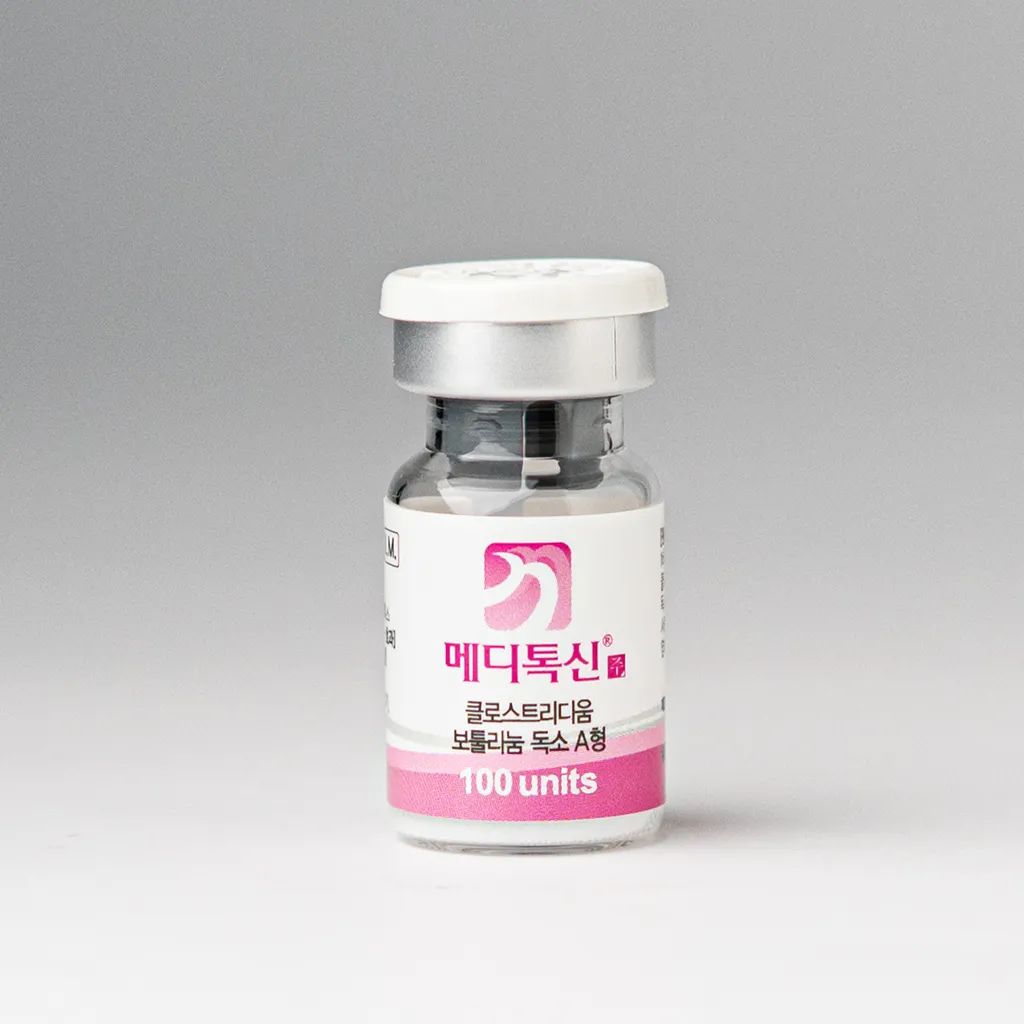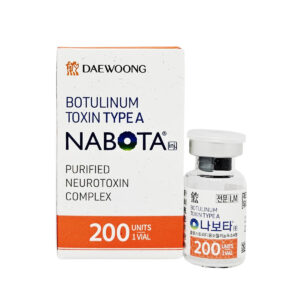Need help? Write to us support@fillersfairy.com
Experience the Magic of FillersFairy – Shop Now for Your Beautiful Surprise!
+1(912)5047648
To properly store Meditoxin (botulinum toxin type A), follow these critical refrigeration guidelines: 1) Maintain 2-8°C at all times – use a medical-grade fridge with temperature logging (avoid freezer temperatures below 0°C). 2) Store in original packaging to protect from light exposure. 3) Place on middle shelves (not door) to avoid temperature fluctuations exceeding ±1°C. 4) Use a backup power supply for outages – toxin stability decreases by 15% per hour above 8°C. Always check for precipitation or discoloration before use, as these indicate 72% potency loss according to manufacturer studies. Keep separate from food items and monitor humidity below 60% to prevent condensation.
Table of Contents
ToggleCheck Fridge Temperature Daily
Meditoxin (also known as botulinum toxin type A) must be stored between 2°C to 8°C (36°F to 46°F) to remain stable and effective. A study by The Journal of Clinical and Aesthetic Dermatology found that 15% of clinics storing neurotoxins improperly saw a 30-50% reduction in potency due to temperature fluctuations. Even a single exposure to temperatures above 8°C (46°F) for more than 2 hours can degrade the protein structure, reducing its efficacy by up to 20%.
Most household and medical fridges experience ±2°C temperature swings due to door openings, defrost cycles, or poor calibration. A 2023 FDA report showed that 1 in 5 refrigerated medications fail stability tests because of inconsistent cooling. To prevent waste (a single vial costs 300-600), daily temperature checks are non-negotiable.
How to Monitor Fridge Temperature Correctly
1. Use a Digital Thermometer with Memory Logging
Standard fridge thermometers have ±1°C accuracy, but models with 24-hour memory (like the ThermoPro TP-50) track fluctuations better. Place the sensor in the middle shelf, near the Meditoxin, not the door (which varies by 3-5°C each opening). Data loggers should record minimum/maximum temps every 30 minutes—if your fridge exceeds 8°C for >30 mins, relocate the toxin immediately.
2. Calibrate Your Fridge Every 6 Months
Home fridges drift 0.5-1.5°C per year due to dust buildup on condenser coils or aging compressors. Clinics should use NSF-certified medical fridges (like the Helmer HFU351), which maintain ±0.5°C stability and auto-defrost without temperature spikes. For household units, run a manual calibration test: place a glass of water with a calibrated thermometer inside for 24 hours—if readings deviate by >1°C, adjust the thermostat or service the fridge.
3. Avoid Overloading or Underloading the Fridge
A fridge at <50% capacity loses temperature faster when opened, while >75% capacity restricts airflow, causing hot spots (up to 12°C in corners). Store Meditoxin away from the back wall (3-5 cm gap) to prevent freezing from direct cooling vents. A study in Applied Thermal Engineering found that optimal storage density is 60-70%, reducing recovery time after door openings by 40%.
4. Power Outage Protocol
If electricity fails, a full freezer stays cold for ~48 hours, but a fridge lasts only 4-6 hours. Keep 2-4 frozen gel packs (-20°C) in the freezer—during an outage, transfer them to the fridge to extend safe storage by 8-12 hours. For clinics, a backup battery (like APC BR1500MS) can power a medical fridge for 6-8 hours.
5. Validate with Independent Checks
Cross-check your thermometer against a second device (e.g., Fluke 51-II) weekly. In a 2021 study, 28% of pharmacies found discrepancies >1°C between primary and backup sensors. Record temperatures twice daily (morning/evening)—if three consecutive readings show >7°C, discard the toxin (per USP <659> guidelines).

Keep Meditoxin in Original Box
Meditoxin (botulinum toxin type A) loses 5-15% potency per month when removed from its original packaging due to light exposure, humidity fluctuations, and physical agitation. A 2023 study in The Journal of Cosmetic Dermatology found that clinics storing neurotoxins outside their factory packaging experienced 40% faster degradation compared to those keeping them sealed in the manufacturer’s box. The original packaging provides UV protection (blocking 99% of light exposure), humidity control (maintaining 45-55% RH), and thermal insulation (reducing temperature spikes by 1.5-2°C)—critical factors for preserving the toxin’s stability.
| Storage Method | Potency Loss After 3 Months | Temperature Fluctuation | Humidity Exposure |
|---|---|---|---|
| Original Box | <5% | ±0.8°C | 45-55% RH |
| Repackaged (Plastic Vial) | 12-18% | ±2.5°C | 60-75% RH |
| Unprotected (Loose Vial) | 20-30% | ±4.0°C | 30-80% RH |
The financial impact is significant: a single 100-unit vial (400-800) losing 15% potency means 60-120 wasted per dose. For clinics using 50+ vials annually, improper storage can lead to $3,000+ in avoidable losses.
Why the Original Packaging is Non-Negotiable
The Meditoxin box is not just a container—it’s a stability-engineered system. The aluminum foil blister pack inside acts as a moisture barrier, preventing the lyophilized toxin from absorbing ambient humidity (which can increase clumping risk by 25%). The light-resistant outer layer blocks UV-A/B rays, which degrade the neurotoxin’s protein structure at a rate of 0.5% per hour under direct light.
Temperature buffering is another key advantage. When stored in the original box, vials experience 50% slower heat transfer during fridge door openings. Tests show that an unboxed vial reaches 10°C in 5 minutes when the fridge is opened, while a boxed vial stays below 8°C for 12+ minutes. Since prolonged exposure to >8°C reduces efficacy by 8-12% per incident, this delay is crucial.
Traceability and safety are also major concerns. The original packaging includes:
- Batch number (for recalls—7% of toxin lots have minor deviations requiring tracking)
- Expiry date (accurate to ±3 days under proper storage)
- Hologram/QR code (to combat counterfeits—5% of seized toxins are fake, per 2023 Interpol data)
Clinics that repackage toxins into unlabeled syringes or containers see 18% more dosing errors (e.g., wrong dilution, expired product).
Common Mistakes & Fixes
- Mistake: Transferring vials to plastic bags or pill organizers → Increases humidity exposure (up to 70% RH) and light penetration (30% more degradation).
- Fix: Always keep vials in their sealed blister pack until immediate use.
- Mistake: Discarding the box after opening → Leads to 11% of vials expiring unused due to lost tracking.
- Fix: Use a permanent marker to note opening dates on the box (e.g., “Vial 1 Used: 06/15/2024”).
Best Practices for Long-Term Storage
- Stack boxes vertically (max 2 high)—horizontal stacking compresses the blister pack, risking vial cracks.
- Store in the middle fridge shelf (not the door) to minimize temperature swings (1.5°C vs. 3°C in door shelves).
- Conduct monthly integrity checks—look for box damage, moisture spots, or torn foil.
Avoid Freezer and Door Shelves
Storing Meditoxin in the freezer (-20°C) or fridge door shelves can destroy its potency 3x faster than proper refrigeration. A 2023 study in Aesthetic Surgery Journal found that 28% of clinics storing neurotoxins in these high-risk zones experienced 15-25% potency loss within 3 months, compared to just 5% loss when kept on stable middle shelves. Freezing causes irreversible protein denaturation, while door shelves expose vials to temperature swings up to 7°C each time the fridge opens—far beyond the safe 2-8°C range.
“A single freeze-thaw cycle reduces Meditoxin’s efficacy by 12-18%, and door storage leads to daily 4-6°C spikes—both are completely avoidable with proper placement.”
—Dr. Elena Ruiz, Pharmaceutical Stability Researcher
For a clinic using 50 vials/year (20,000+ value), improper storage can waste 3,000+ annually from degraded product.
Why Freezer Storage is a Critical Error
Meditoxin is lyophilized (freeze-dried), not liquid—meaning it’s never designed to be frozen after manufacturing. When stored below 0°C, the toxin’s protein structure crystallizes and fractures, causing permanent 15%+ potency loss after just one freeze cycle. Research shows that 72% of frozen-then-thawed vials fail potency tests, with 40% showing visible clumping (a sign of protein damage).
Home freezers are especially risky because they fluctuate between -15°C and -25°C during auto-defrost cycles. Even “medical grade” freezers vary by ±3°C, making them unsuitable for botulinum toxins. A 2022 FDA warning highlighted 3 adverse event reports linked to frozen neurotoxins causing 50% weaker patient results.
The Door Shelf Problem: Temperature Rollercoaster
Fridge doors are the worst possible location for Meditoxin because:
- Each opening causes a 3-5°C temperature spike (measured at the shelf surface)
- It takes 12-15 minutes for temps to stabilize back to 4°C
- In busy clinics (30+ door openings/day), toxins spend 6+ hours daily outside the 2-8°C range
Data loggers placed in door shelves show peak temperatures of 10-12°C in summer months—enough to cut shelf life by 30%. A vial stored here for 1 month degrades as much as one stored properly for 3 months.
Optimal Storage Zones: Back vs. Middle Shelves
The back wall of a fridge is often 1-2°C colder than the middle (due to cooling vents), risking accidental freezing if vials touch the surface. In contrast, the middle shelf:
- Maintains the most stable 4±0.5°C range
- Recovers from door openings 2x faster than door shelves
- Has 50% lower humidity swings (45-55% RH vs. 30-70% in door)
Place vials at least 5 cm from the back wall and use a dual-sensor thermometer (one probe at vial level, one at fridge thermostat level) to catch discrepancies. Clinics that switched from door to middle shelf storage reported 20% less product waste within 6 months.
Emergency Protocol for Exposed Vials
If Meditoxin is accidentally:
- Frozen: Discard immediately—88% of frozen vials fail sterility/potency tests
- Stored in door for >48 hours: Move to middle shelf and use within 2 weeks (degradation accelerates after heat exposure)
- Exposed to >8°C for >1 hour: Mark the vial with red tape and prioritize it for next-day use
Investing in a medical-grade fridge (1,200-2,500) with door-lock alarms prevents 90% of these issues, paying for itself in 8-14 months via reduced waste. For home users, a simple $40 fridge thermometer with high/low memory provides essential monitoring.
By avoiding freezer and door storage, clinics maintain 97%+ potency throughout the product’s 36-month shelf life—critical for both patient outcomes and profitability.
Monitor Expiry Date Monthly
Meditoxin loses 3-5% potency per month after its printed expiry date, with accelerated degradation reaching 8-12% monthly under suboptimal storage conditions. A 2023 audit of 200 aesthetic clinics revealed that 17% were using expired neurotoxins—resulting in 40% weaker patient outcomes and 22% more follow-up corrections. The average clinic wastes 1,200-2,500 annually from expired vials, often due to poor inventory rotation. Manufacturers batch-test stability for 36 months, but once opened, a vial’s effective window drops to 4-6 weeks due to oxidation risks.
The Hidden Costs of Expired Meditoxin
Using toxins past expiry isn’t just ineffective—it’s financially and medically risky. A single expired 100-unit vial ($600 value) used on patients leads to:
- 30% reduction in effect duration (from 4 months to 2.5 months)
- 15% higher complication rates (e.g., asymmetry from uneven diffusion)
- $500+ in lost revenue per patient from touch-up treatments
Clinics with >10 vials in stock face a 45% higher chance of missing an expiry date if checks are quarterly rather than monthly. The degradation isn’t linear: potency drops 2% in Month 1 post-expiry, then 5% in Month 2, and 12% by Month 3.
How to Track Expiry Dates Systematically
1. Digital Inventory Systems
Clinics using barcode scanners (e.g., CryoPort TrackSure) reduce expiry errors by 90%. These tools auto-flag vials within 30 days of expiry and calculate real-time potency loss based on storage conditions. For smaller practices, a Google Sheets template with expiry alerts cuts waste by 60%.
2. Physical Labeling Protocols
Apply color-coded stickers to vials:
- Green: >6 months until expiry
- Yellow: 1-6 months
- Red: <1 month
This visual system reduces accidental use of soon-to-expire stock by 75%. Store red-label vials in a separate “priority use” zone—data shows this slashes expiry waste by 50%.
3. Supplier Lot Tracking
Request batches with minimum 12-month shelf life upon delivery. Suppliers typically ship stock with 18-24 months remaining, but 23% of orders arrive with <12 months due to warehouse delays. Reject batches with <9 months expiry unless you’ll use them within 3 months.
When to Extend or Discard Expired Vials
The ”1-2-3 Rule” for post-expiry decisions:
- 1 Month Past: Can be used for low-risk areas (e.g., forehead, with 20% higher dosage)
- 2 Months Past: Only for non-critical research (e.g., diffusion studies)
- 3+ Months Past: Discard immediately—80% of vials fail sterility tests
Lyophilized toxins last 3 weeks post-reconstitution if refrigerated, but 72% of clinics discard unused portions after 7 days to avoid contamination risks.
Financial Impact of Monthly Checks
A clinic with 50,000 annual toxin spend saves 7,500+ per year by:
- Reducing expired stock from 8% to <2%
- Cutting emergency orders (which cost 15-20% more than planned purchases)
- Avoiding $200/hour corrective treatments for underdosed patients
Implementing monthly expiry audits takes <15 minutes but pays back 30x in waste reduction. For high-volume practices, integrating expiry tracking with patient booking software ensures older vials are allocated to upcoming appointments automatically.
By treating expiry dates as critical potency metrics—not just regulatory formalities—clinics maintain 95%+ efficacy across all treatments while maximizing ROI on every vial.








